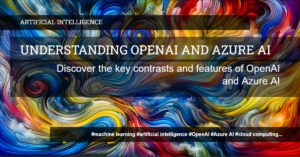Introduction to ChatGPT and Google Bard
In the world of artificial intelligence and machine learning, language models play a crucial role in various applications. Recently, OpenAI introduced ChatGPT – a state-of-the-art language model that can generate human-like text based on a given prompt. While ChatGPT has received significant attention and praise, it also presents some challenges for applications such as Google Bard.
Understanding ChatGPT
ChatGPT is a powerful language model developed by OpenAI that relies on deep learning techniques to generate text based on user prompts. It is trained on a massive amount of data, enabling it to understand and generate coherent text responses.
When a user interacts with ChatGPT, they provide a prompt or a series of messages, and the model generates a response based on the input. ChatGPT’s ability to generate contextually relevant and fluent responses has made it popular among developers, researchers, and even casual users.
The Challenges with ChatGPT for Google Bard
Google Bard, an advanced conversational AI system developed by Google, could potentially face challenges due to the rise of models like ChatGPT. While Google Bard is designed to have conversations that are informative, engaging, and safe, the capabilities of ChatGPT may prove to be problematic for it.
Quality Control: Language models like ChatGPT can generate highly convincing and fluent text, but they can also produce incorrect or misleading information. This poses a challenge for Google Bard, as it needs to ensure that the information provided is accurate and reliable.
Contextual Understanding: ChatGPT may struggle with understanding and maintaining context over longer conversations. This can lead to inconsistent responses and misunderstandings, creating a less smooth user experience when compared to a dedicated conversational AI system like Google Bard.
Ethical Considerations: ChatGPT’s ability to generate realistic text poses ethical concerns, particularly in cases where it can be exploited to spread misinformation, generate harmful content, or impersonate individuals. This raises questions about the responsible use of AI technology.

